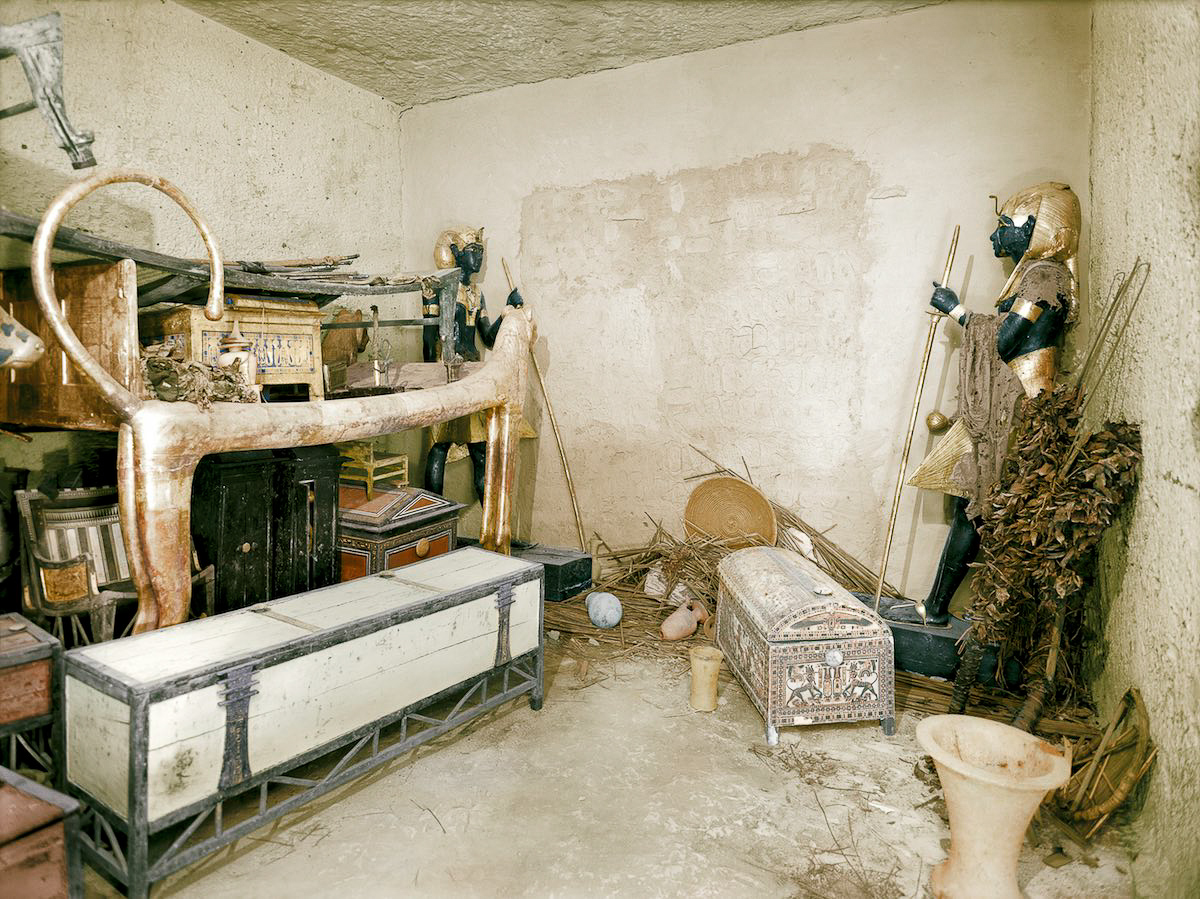What is happening now? And what should we expect to find when they look behind the wall?
It has been a week since the remarkable news that radar scans strongly suggest that Tutankhamun's tomb hides a mystery: secret chambers behind the west and north walls of the Burial Chamber.
British Egyptologist, Dr Nicholas Reeves, put Tutankhamun back on the world stage earlier this year when he suggested that unnatural-looking lines in the plaster covering the tomb walls could be the faint traces of hidden chambers. This could be, he suggests, a tomb within a tomb.
Right now the scan data is in Japan for detailed analysis. They say it will take about a month to fully examine the results, and months again to determine what to do next. It is likely a cautionary hole will be drilled from the tomb's 'Treasury' into the adjacent space behind the Burial Chamber's north wall.
Writer Anand Balaji describes his hopes for the next exploration of the tomb:
"We are inching ever so close to discovering if KV 62 served as a double burial. Speculation is rife in the Valley, and indeed around the world, on the myriad possibilities of finding another royal from the Sun Family. Discussions on the possible identity of the one who has remained elusive thus far has gathered steam.
But conjectures about royal personages apart, what almost everyone really hopes for is yet another set of dazzling, golden nested coffins and accompanying treasures. Many articles doing the rounds anticipate a far greater horde if it is indeed Nefertiti who lies buried behind those walls. However, there is no yardstick by which such assumptions can be justified. We know that members of the Amarna family gave up important objects from their burial trousseaus for Tutankhamun’s reuse. So should we be disappointed to find Nefertiti, for example, lying in a wooden coffin? Will such a discovery dampen our spirits?
Remember, archaeologists spend years out in the field digging; and endure the most punishing conditions. Many a time they have little to show for their immense efforts. But even the smallest of discoveries are no less important, as every little artefact serves to enhance our knowledge. So, I think the real treasure would be the discovery of even a scroll of papyrus. Such a find would doubtless help fill in the gaps in our understanding of that largely obscure epoch."
Pictured is the Antechamber of Tutankhamun's tomb, as first encountered by Howard Carter and his benefactor, Lord Carnarvon in November 1922.
Without painted decorations to obscure it, the wall sealing off the king's Burial Chamber is clearly a false one. It wasn't long before Carter broke through to reveal the magnificent golden shrines and coffins covering the royal mummy.
Throughout the eight-year-long exploration and clearance of the tomb, Metropolitan Museum photographer Harry Burton was there to capture the journey, developing his pictures in an improvised darkroom in a neighbouring tomb.
In total, Burton generated almost 2,800 glass plate negatives. The images not only documented the work in minute detail, they also brought Howard Carter and Burton international renown.
A selection of the photographs, now owned by the Griffith Institute in Oxford, have been colorized by Dynamichrome for the exhibition The Discovery of King Tut, now showing in New York. With precisely crafted replicas and reconstructions, the exhibit allows visitors to step into exact recreations of three burial chambers just as the discoverers saw them.
Let's hope it won't be too long before we get to see what is behind the walls of Tutankhamun's tomb: whatever there might be.
